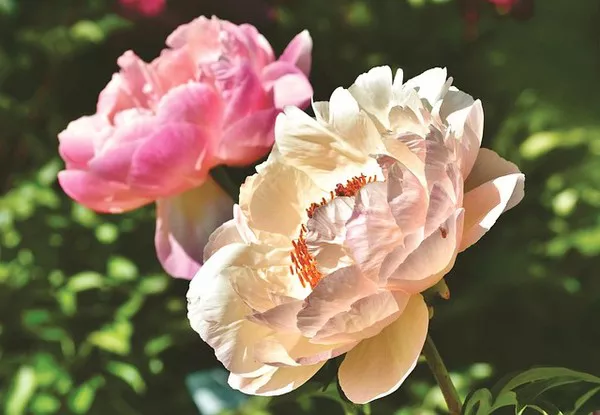Flowers, with their vibrant colors, delicate petals, and intoxicating fragrances, have captivated humanity for centuries. Beyond their aesthetic appeal, flowers hold a profound symbolism in various cultures and traditions worldwide. From expressing emotions to conveying messages, flowers serve as powerful symbols in the tapestry of human life, carrying meanings that transcend language barriers. In this article, we delve into the rich symbolic language of flowers and explore the myriad ways in which they enrich our lives.
Historical Perspectives: The Origins of Floral Symbolism
The association of flowers with symbolic meanings dates back to ancient civilizations. In ancient Egypt, for example, flowers such as the lotus held significant religious and spiritual symbolism, representing rebirth and the cycle of life. Similarly, in ancient Greece and Rome, flowers were closely linked to mythology and deities, with each flower carrying its own mythological significance.
During the Victorian era, known as the “Language of Flowers” or floriography, flowers gained popularity as a means of conveying messages and emotions. In this elaborate system, each flower was assigned a specific meaning, allowing individuals to express sentiments discreetly through floral arrangements and bouquets.
The Language of Love: Expressing Emotions Through Flowers
One of the most common uses of flowers is to express love and affection. Whether it’s a romantic gesture or a token of friendship, flowers have long been associated with sentiments of love and appreciation. Roses, in particular, have emerged as the quintessential symbol of love, with each color carrying its own significance. Red roses convey passionate love, while pink roses symbolize admiration and gratitude. Similarly, tulips, daisies, and lilies are often used to express affection and admiration in various contexts.
Cultural Significance: Flowers in Rituals and Traditions
Across different cultures and religions, flowers play a central role in various rituals and ceremonies. In Hinduism, garlands of marigolds are used in religious ceremonies and festivals as offerings to deities, symbolizing auspiciousness and purity. In Chinese culture, flowers such as peonies and orchids hold symbolic meanings associated with prosperity, good fortune, and beauty. Similarly, in Japanese culture, the art of flower arranging, known as ikebana, emphasizes harmony, balance, and the appreciation of natural beauty.
Healing and Well-being: The Therapeutic Power of Flowers
Beyond their symbolic significance, flowers have been valued for their therapeutic properties and healing benefits. The practice of aromatherapy harnesses the natural scents of flowers and plants to promote relaxation, reduce stress, and enhance overall well-being. Lavender, chamomile, and jasmine are just a few examples of flowers used in aromatherapy for their calming and soothing effects on the mind and body.
In addition to aromatherapy, flower essences and herbal remedies have been used in traditional medicine systems for centuries to treat various ailments and promote holistic healing. From calming the nerves to boosting the immune system, flowers offer a natural and gentle approach to supporting health and wellness.
Symbolism in Art and Literature: Flowers as Muse
Throughout history, artists and writers have drawn inspiration from the beauty and symbolism of flowers. From the intricate floral motifs in classical paintings to the lyrical descriptions of gardens in literature, flowers have served as a perennial muse for creative expression. In the works of renowned artists such as Vincent van Gogh and Claude Monet, flowers are depicted not only for their aesthetic appeal but also for their deeper symbolic meanings, reflecting themes of life, growth, and transience.
In literature, flowers are often used as powerful metaphors to convey complex emotions and themes. Writers like William Wordsworth and Emily Dickinson frequently incorporated floral imagery into their poetry, using flowers as symbols of beauty, fragility, and the passage of time. Through their evocative descriptions, these writers invite readers to contemplate the deeper meaning and symbolism embedded within the natural world.
Environmental Significance: Flowers and Ecosystem Health
In addition to their cultural and aesthetic significance, flowers play a crucial role in maintaining ecosystem health and biodiversity. As pollinators such as bees, butterflies, and birds rely on flowers for nectar and pollen, flowering plants facilitate the reproduction of countless species and contribute to the resilience of ecosystems. Moreover, flowers contribute to soil fertility through their decomposition and nutrient cycling processes, supporting the growth of other plants and organisms.
However, the importance of flowers extends beyond their ecological functions. As indicators of environmental health, changes in flowering patterns and abundance can serve as early warning signs of ecosystem disturbances, such as climate change and habitat loss. By preserving floral diversity and habitat integrity, we can safeguard not only the beauty of flowers but also the health and vitality of ecosystems worldwide.
Conclusion
In conclusion, flowers hold a timeless and universal significance in human life, transcending cultural, linguistic, and temporal boundaries. From expressing emotions to enriching rituals and ceremonies, flowers serve as powerful symbols imbued with meaning and resonance. Whether adorning a wedding bouquet, adorning a sacred altar, or inspiring a work of art, flowers continue to captivate our senses and nourish our souls with their beauty and symbolism. As we navigate the complexities of modern life, may we always remember the enduring wisdom and grace found in the language of flowers.


